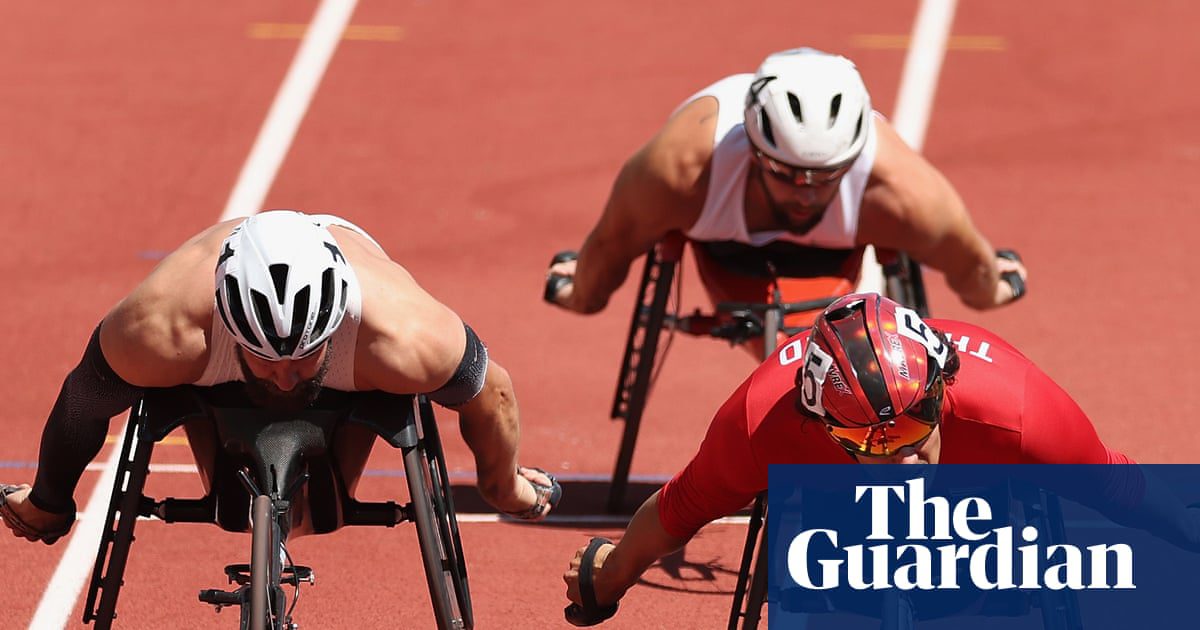Although he came up just short in one of the most thrilling events of last weekend’s US Track and Field Outdoor Championships, Miguel Jimenez-Vergara could still take satisfaction in a crowd-pleasing performance.
Competing for the first time at the famous Hayward Field in Eugene, Oregon, the 24-year-old waged a tense tactical war over 5000m with the US’s fastest wheelchair racers. Entering the final lap, Jimenez-Vergara vaporized a tightly packed field with a ferocious acceleration that energized the crowd. Only one competitor could rise to the challenge: reigning Paralympic gold medalist Daniel Romanchuk. Jimenez-Vergara still led by a wheel as they rocketed through the final turn at more than 20 mph; Romanchuk caught him in the final 50m and won by a tenth of a second.
It was an exhilarating show, and worthy of the big-league setting. But Jimenez-Vergara rejected attempts to spin it as a triumph.
“I just want to win,” he said. “I’m not here to soak up the fans or soak up the atmosphere. I know you probably want me to say I’m excited to be at Hayward and get more visibility [for disabled athletes]. And we do need more eyes on us. But for me, I’ll race in the parking lot. I just want to beat the guy next to me. I just want to be the best.”
That sums up both the promise and the pitfalls of the weekend’s historic championship. For the first time, USA Track and Field showcased America’s Paralympic talent on the sport’s biggest stage, side by side with their better-known, better-paid Olympic teammates. It’s a clear win for parasports equity, one that recognizes disabled competitors as supremely gifted athletes rather than novelty acts.
But it’s a largely symbolic victory, and glaringly overdue. Achieving the type of success Jimenez-Vergara hungers for – global dominance in paratrack – will require more than splashy gestures toward inclusion. It will take a level of money and commitment far beyond what Team USA has previously invested in parasports. There’s urgency to post a high medal count when the Paralympics come to US soil in Los Angeles three years from now. But time is short, and talk is cheap.
“Seeing the integration actually happen is really cool,” says sprinter Jarryd Wallace, a four-time Paralympian and longtime advocate for equity. “It shows how much growth there has been. But in order to make the heights climb even higher, we’ve got to keep asking questions. No one really knows the right direction yet. We’re finding out what the needs are, what the resources and opportunities are. And I think it’s going to catapult us to places we’ve never seen US parasport before.”
The places we have seen US parasport before can generously be described as third-rate. Until last year, national championships and Paralympic trials were routinely staged at high school and community-college tracks that lacked accessibility accommodations for the…
Disclaimer
We strive to uphold the highest ethical standards in all of our reporting and coverage. We 5guruayurveda.com want to be transparent with our readers about any potential conflicts of interest that may arise in our work. It’s possible that some of the investors we feature may have connections to other businesses, including competitors or companies we write about. However, we want to assure our readers that this will not have any impact on the integrity or impartiality of our reporting. We are committed to delivering accurate, unbiased news and information to our audience, and we will continue to uphold our ethics and principles in all of our work. Thank you for your trust and support.
Website Upgradation is going on. For any glitch kindly connect at 5guruayurveda.com



